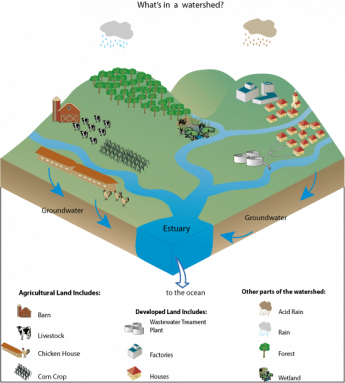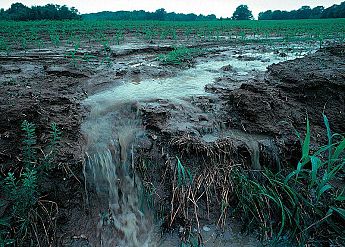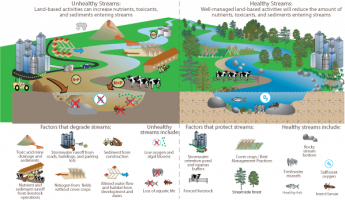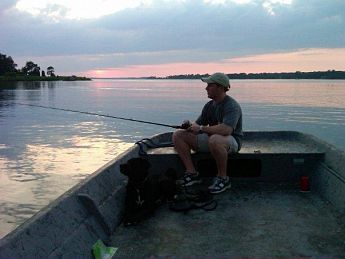How does the land affect the sea?
Do you know that no matter where you live you are part of a watershed? A watershed is an area of land and waterways that drain into a larger body of water. Watersheds can vary in size and shape depending on the contour of the land. All of the activities that take place within your watershed eventually affect the oceans. Water quality is a direct reflection of different land uses and characteristics. Agriculture and land development are two major sources of the pollutants that enter our waters. Generally, there are two different forms of pollution, point and nonpoint source pollution. Point sources are those that are easy to identify, where pollution usually comes from a pipe or other structure, such as a wastewater treatment plant or smokestack. Nonpoint source pollution comes from many different sources and includes agricultural and urban runoff. Both point and nonpoint source pollution lead to poor water quality in our streams and this will eventually contribute to an unhealthy ocean.
Why is poor water quality a problem?
Excess amounts of nitrogen (N), phosphorus (P), and sediment are the main contributors to poor water quality. These pollutants enter our waters through surface runoff, or water draining off of the land, and through groundwater, or water that is stored underground. Poor water quality is characterized by low dissolved oxygen (DO), increased turbidity, or cloudiness of the water, excess amounts of N and P, and undesirable populations of fish and insects. Downstream effects of poor water quality can include dead zones, algal blooms, loss of habitats, and fish kills. Because our waterways lead into the oceans, our local problems can become global problems. The way we handle water today will impact both our water supply and the supply of future generations.
How safe is your water?
On average, the typical American uses between 80 to 100 gallons of water per day. We rely on running water everyday, but we often take for granted the safety of our water. Before you go fishing, do you check to see if that water is safe? If recent trends in declining water quality continue, the fish that you catch may not be healthy enough to eat. Pollution can result in dirty drinking water, beach closures, and even diseases in humans. Even everyday activities such as flushing a toilet, washing clothes, and fertilizing the lawn contribute to a decline in our water quality. To avoid contaminating our world’s water supply, we should evaluate our water usage and how it affects our watersheds.







